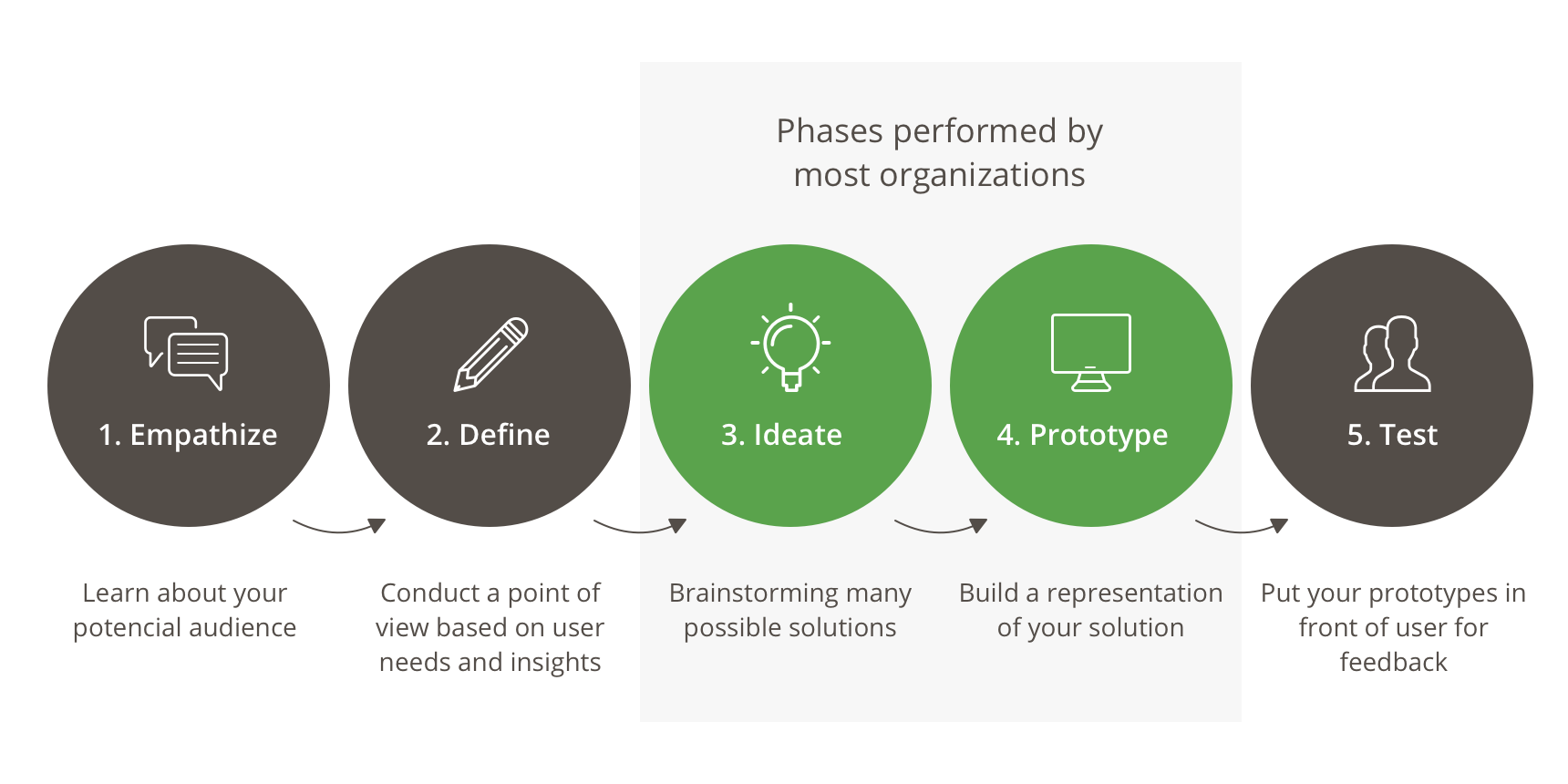The user-centric approach sets the user – and not other stakeholders – as the focal point for decision-making. Teams must prioritize users, so that they end up with a product that actually meets customer needs.
Of course, creating a user-centered company culture isn’t easy. It requires taking user-centric actions at every step and with every stakeholder in the development process.
Let’s look at how to instill a user-centered culture at your workplace, including the benefits and building blocks of how to constantly shift focus to the user.
Benefits of a user-centric company culture
So, what’s the fuss with user-centricity? There are a handful of good reasons why user-centered organizations successfully develop products.
The benefits of a user-centric model are far-ranging, including:
- Boosted productivity: User-centered culture creates efficiencies and clarifies purpose. That’s because focusing on users means understanding what problem they’re solving and keeping it front-and-center during the development process. In turn, this allows teams to “solve” this problem with real, high-quality solutions.
- Sense of purpose and empathy within teams: User-centered organizations also find their teams are more motivated. They’re able to embrace constant change and empathize with each other.
- Greater customer satisfaction and loyalty: When you make a product with user research and participation, it turns out better. Customers are happier with the final product because it’s been fitted to their needs. They’ll also trust your work, instead of competitors, in the future.
- Reduced risk of error: This approach ensures that products are made with specific contexts in mind. Because of the iterative process, error is more likely to be found earlier in the design process. This prevents a team from developing a product that doesn’t solve the problem at hand.
- Increased sales: Research shows that customer-centric companies are 60% more profitable compared to those who aren’t. Happier customers means returning customers. The user-centric approach also cuts out inefficiencies, which means more return.
- More sustainable business models: Under this approach, the business model becomes a sustainable process. With better products and happier customers, the business model is also more stable.
In the end, this process also highlights communication with clearly defined goals and regular client-developer meetings.
How user-centric culture goes hand-in-hand with business goals
It’s clear that having a user-centric approach can do wonders for motivating your teams and satisfying your clients. But more than anything, user-centered culture is the backbone of any successful business model.
As we’ve mentioned, user-centric culture cuts out inefficiencies, reduces error and boosts productivity. This means your product life cycle may be more reliable. If your company is looking to expand your client list, having an efficient and proven working method can help you plan workloads, accurately detail contracts and expand operations as needed.
Moreover, business goals related to sales will also benefit from putting users first. Here at Making Sense, we’re committed to disrupting different industries with our solutions. To do this, our user-centric method is key to understanding each new industry, defining the client’s needs within it and developing a high-quality solution that actually meets these requirements.
In fact, our user-centric approach underlines all of our business goals. Whether it’s creating world-class solutions, expanding client lists, disrupting industries, retaining top talent or something else, user-centered culture is truly the “how” behind it all.
For us, the user-centric approach is the heart of generating business value for both our clients and ourselves.
How to create a user-centered culture
Now that you’re aware of how the user-centric approach can benefit your organization, let’s look at how to create it. As you foster this mindset at your company, you’ll need to involve all your teams and processes.
Tip: If you’re thinking that this UX-focus may take up too much time and resources, remember that it’s actually more efficient in the long run.
1. Prioritize the user at every stage of the development process, from listening at the start to testing at the end.
 One biggest mistake in product development is skipping straight to the brainstorming and prototyping stages. Don’t do it. Instead, think user-first and start by learning about your users’ needs. You should always start and end with user input.
One biggest mistake in product development is skipping straight to the brainstorming and prototyping stages. Don’t do it. Instead, think user-first and start by learning about your users’ needs. You should always start and end with user input.
At first, this means listening to customer pain points and their initial needs, as well as defining UX insights gathered from different methodologies, including observing users, their context and how they perform tasks. Then, after you have a prototype, it involves getting feedback from real users. You might even have several feedback loops in order to get full user insights.
Even if these initial steps seem obvious to your project, you should do them. You’re no psychic, after all. By following this approach, you’ll expose your assumptions and discover new user insights.
2. Incorporate the User Experience team into every area of the project workflow.
The User Experience team should be included both in every stage and area of the project. As you create user-centric workflows, be sure that the UX team is included.
Your UX team should have constant contact with product managers, developers, marketers and the QA team. Together they should be defining features, attending meetings and improving prototypes. This is true throughout the development process.
By incorporating UX into the workflow, you’ll also find that this team does wonders for spreading user-centered culture throughout the organization. Others will expect UX to be in the room and will even start thinking user-first themselves.
3. Encourage user-centric company values, so everybody applies UX-thinking.
At the end of the day, any interaction the users have with our products or services will create an experience, regardless of whether it was planned or not. This means that UX is everybody’s responsibility. Each area should have a user-centric approach, so that the workflow runs smoothly. When everybody works from this mindset, teams can better support each other to create better products.
Ultimately, this is the definition of user-centric company culture.
In order to get everybody on board, it’s key to encourage user-centric values at the workplace. This can’t be done overnight. You’ll need to support, train and hire with user-centricity in mind. A few key action points to create user-centric company culture include:
- Explain UX workflows to all teams.
- Run UX workshops.
- Provide UX toolkits and materials.
- Hire employees with a UX mindset.
- Inspire teams with UX outcomes.
At the same time, you can encourage a user-centric approach by focusing on values. For example, you can foster a company culture that rewards empathy, constant iteration, multidisciplinary thinking, optimism in the face of challenge and learning from failure. These values are a good foundation for user-centric thinking within an iterative development process.
Risks of not having a user-centered organization
User-centered culture is essential for minimizing the risks of product development. As you know well, there are plenty of risks.
Think about your nightmare project scenarios. You build a product that nobody wants or needs. You deliver a product late with lots of bugs from all the changes. Or the product turns out vastly different from the prototype because of vague requirements.
Often, these risks arise because developers don’t understand why something is important, or they feel cut off from other departments. User-center culture solves these issues. It’s the backbone that unites teams around a common sense of purpose: the user.
Final takeaway
At Making Sense, user-centered culture is king. For us, it’s about creating high-quality products and getting an edge on the competition too.
Most importantly, it’s about satisfying our clients. Our mojo is to fall in love with our users, so we create actual solutions. And it works: putting the user first royally pays off.
